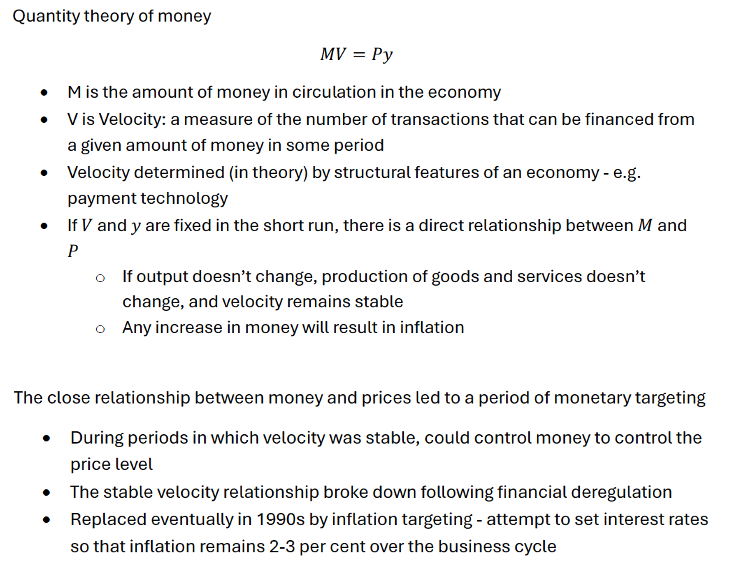macro lecture 05 (fiscal policy & financial intermediaries)
1/15
There's no tags or description
Looks like no tags are added yet.
Name | Mastery | Learn | Test | Matching | Spaced |
|---|
No study sessions yet.
16 Terms
Fiscal Policy & Output Intro

Fiscal & Aggregate Economy

Fiscal Policy Diagram (changed in gov spending)
We start at output 𝑌! with the function 𝑃𝐴𝐸(𝐺!) intercepting the 45° line
• In this example, 𝑌! is a contractionary gap because we have a potential output at
𝑌∗
o i.e. PAE is less than 𝑌∗
• To reach 𝑌∗ we increase government expenditure, so 𝐺# > 𝐺! , shifting PAE
upwards
• This gives us a new function 𝑃𝐴𝐸(𝐺#)
o Everything else has remained constant, only government expenditure has
increased
• The new function 𝑃𝐴𝐸(𝐺#) has given us a new equilibrium 𝑌# which is a lot closer
to the potential output 𝑌∗ than 𝑌!
o Note: if we say the increase in government expenditure is by $100,
because of the multiplier eTect, there’s a direct increase in PAE which is
illustrated by the shift upwards
o However, movement towards 𝑌# is by the indirect increase in the induce
part of consumption, increasing output through the multiplier eTect
• We are now closer to potential output
• Because of Okun’s Law, this increase in output/economic activity would lead to
firms hiring more people and decrease the unemployment rate
• With the expansionary fiscal policy, GDP increases and unemployment
decreases

Fiscal Stimulus: Increase G or Decrease T?

Limitations of Fiscal Policy in Demand Management

Empirical Limitations of Fiscal

Fiscal Policy: Automatic Stabalisers
Automatic stabilizers mean that the economy adjusts naturally through built-in fiscal mechanisms, rather than requiring active government intervention. These stabilizers, such as progressive tax systems and transfer payments (e.g., unemployment benefits), automatically respond to economic fluctuations:
During a boom, tax revenues increase while government spending on welfare decreases, slowing down excessive growth.
During a recession, tax revenues decrease while government spending on welfare increases, supporting demand and preventing a deeper downturn.
Since these mechanisms operate automatically without new government policies or discretionary actions, they help stabilize the economy in a predictable way.
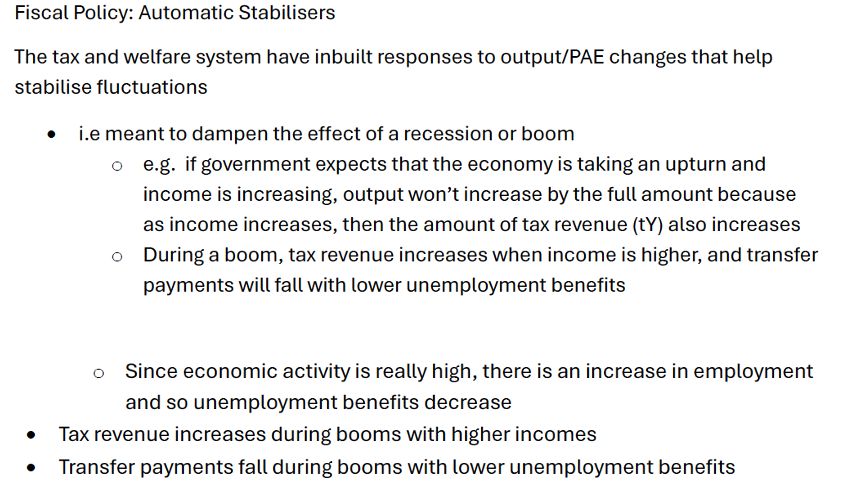
Fiscal Policy and Debt

Role of Financial Markets in the Macroeconomy

Financial Intermediaries
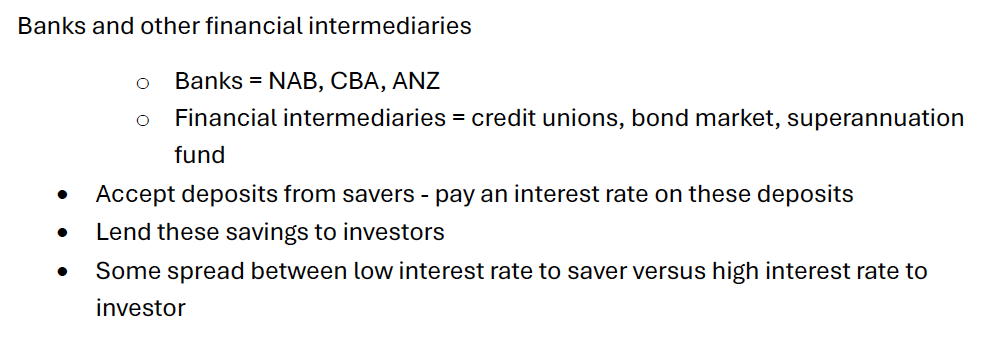
Financial Markets
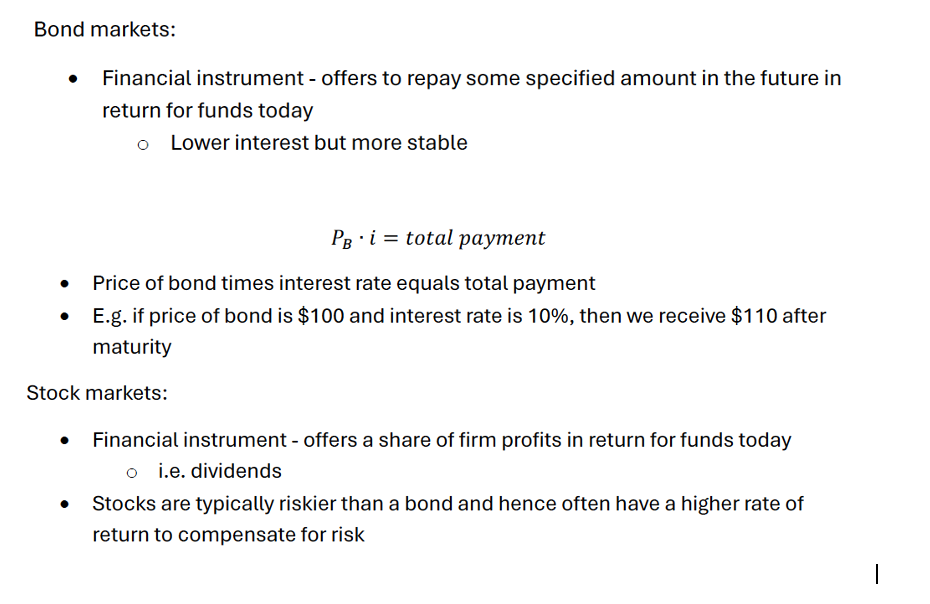
Benefits of Financial Intermediation
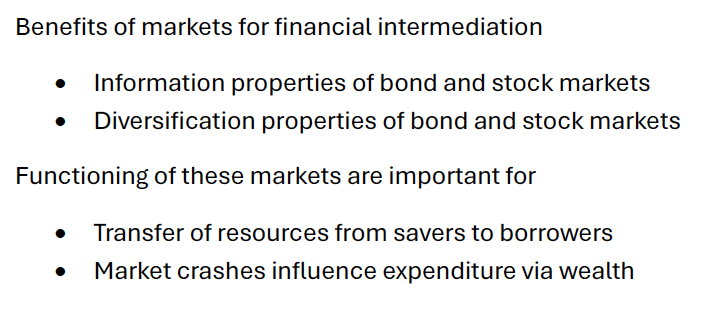
Role of Monet
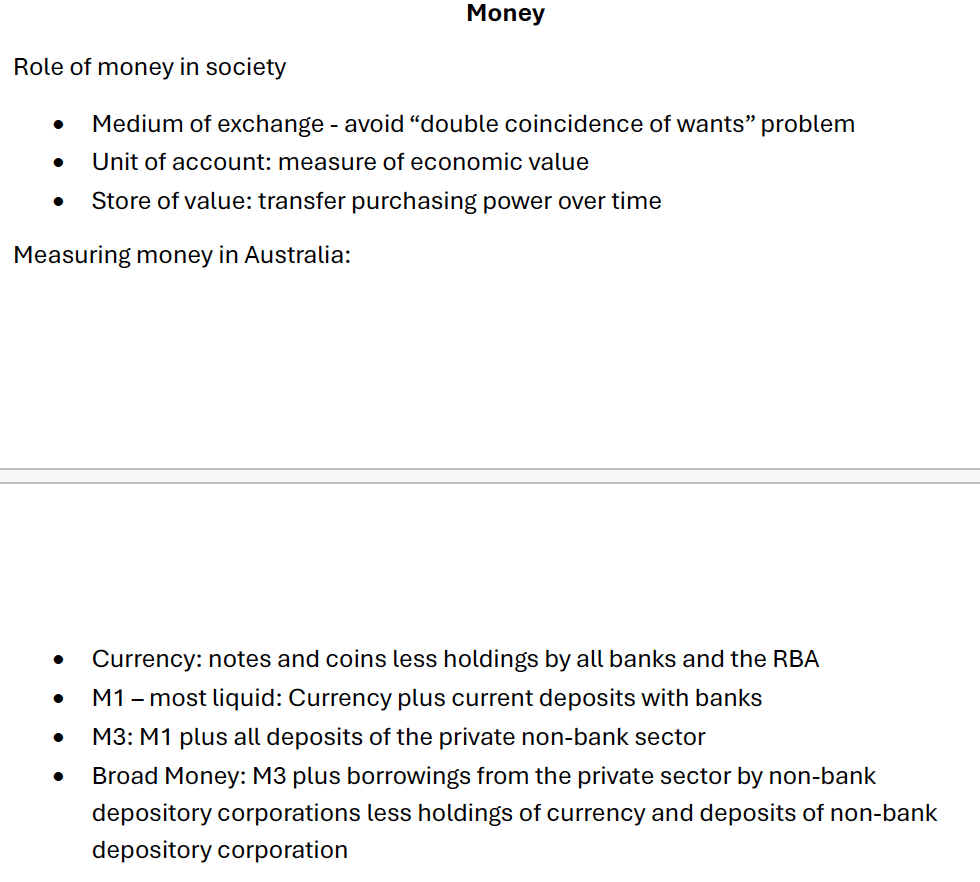
Money Multiplier
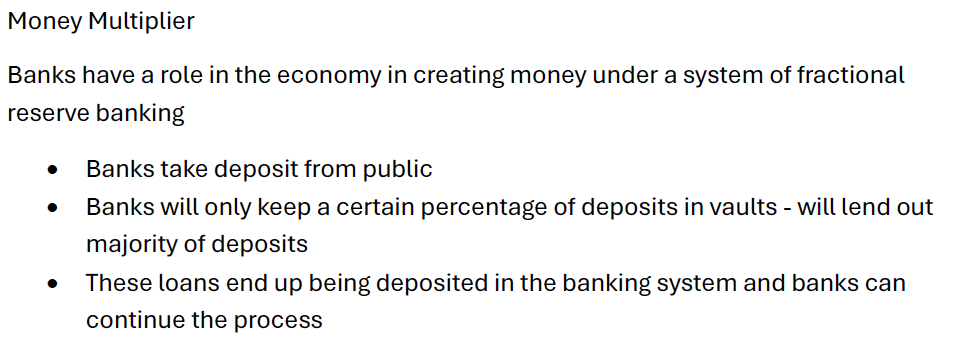

Money Multiplier Example
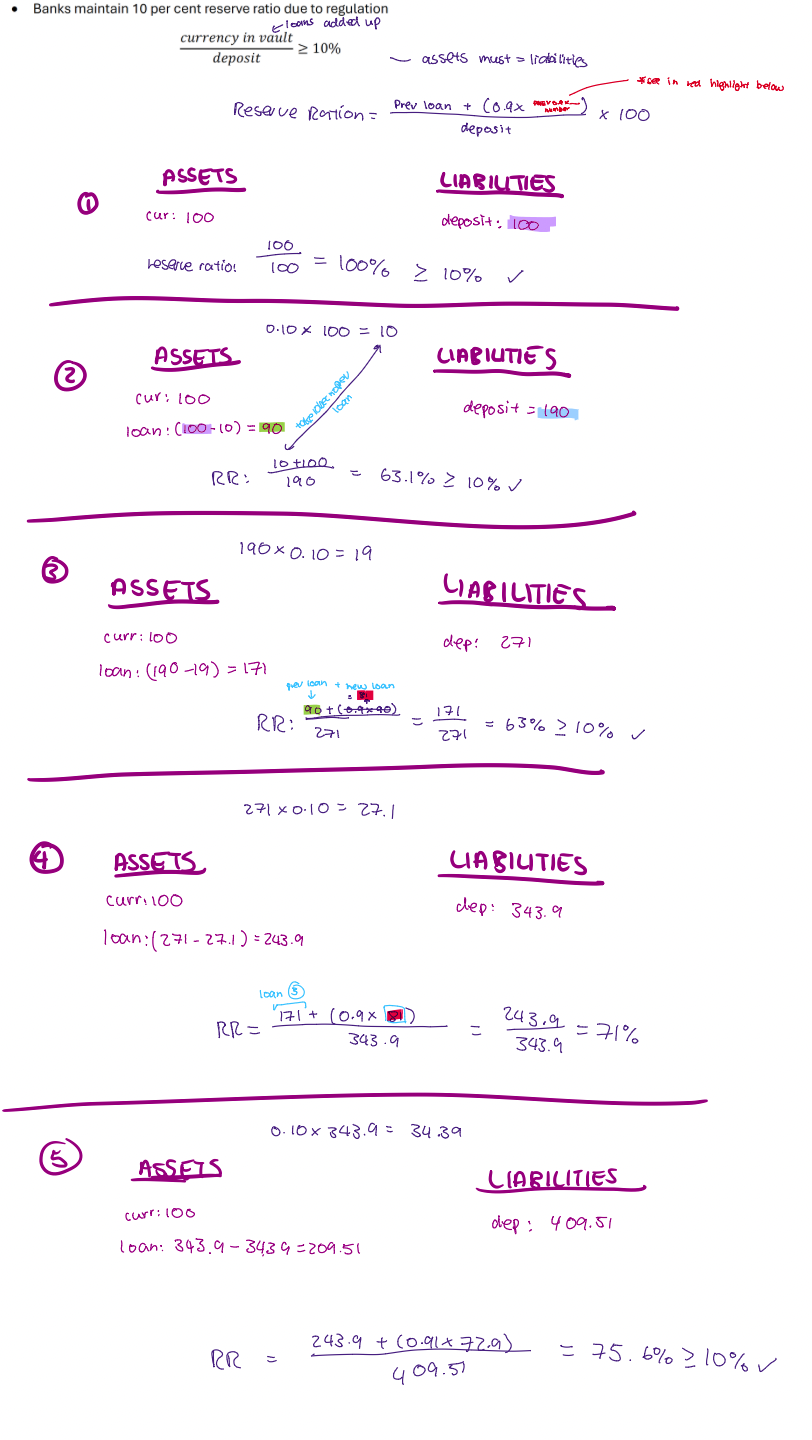
Quantity Theory of Money
